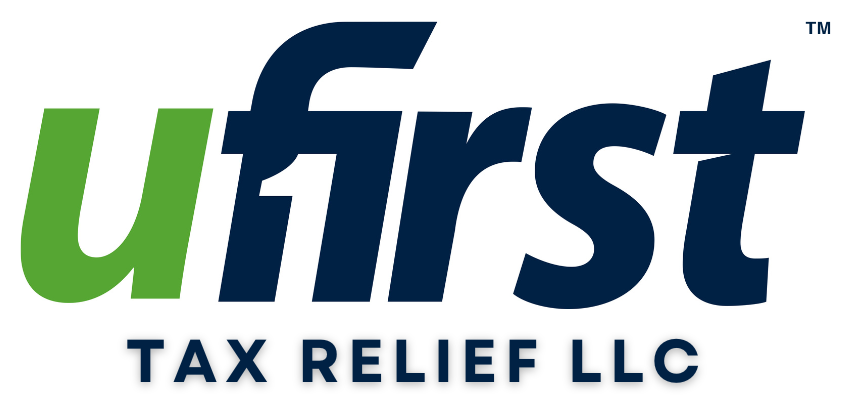IRS Penalties for Late Filing and Non-Payment of Taxes
But don’t panic just yet! 🛑 Understanding the ins and outs of IRS penalties is your first step towards regaining control of your tax situation. Whether you’re facing late filing fees, non-payment charges, or both, there’s hope on the horizon. By learning about these penalties and exploring relief options, you can navigate the murky waters of tax compliance and potentially save yourself thousands of dollars.
In this comprehensive guide, we’ll dive deep into the world of IRS penalties, covering everything from understanding the different types of penalties to strategies for avoiding them altogether. We’ll explore late filing and non-payment penalties, discuss penalty relief options, and provide practical tips for staying on the right side of the tax law. So, buckle up and get ready to take charge of your tax responsibilities – your financial future may depend on it! 💪💼
Understanding IRS Penalties

A. Types of tax-related penalties
The IRS imposes various penalties to ensure compliance with tax laws. Here are the main types:
Failure-to-file penalty
Failure-to-pay penalty
Accuracy-related penalty
Estimated tax penalty
Fraudulent return penalty
Each penalty serves a specific purpose in maintaining the integrity of the tax system. Let’s compare their key features:
| Penalty Type | Purpose | Typical Rate |
|---|---|---|
| Failure-to-file | Encourage timely filing | 5% per month, up to 25% |
| Failure-to-pay | Ensure prompt payment | 0.5% per month, up to 25% |
| Accuracy-related | Promote accurate reporting | 20% of underpayment |
| Estimated tax | Ensure regular tax payments | Variable, based on underpayment |
| Fraudulent return | Deter deliberate tax evasion | 75% of underpayment |
B. Factors influencing penalty amounts
Several factors can affect the severity of IRS penalties:
Time elapsed since the due date
Amount of unpaid taxes
Taxpayer’s compliance history
Presence of reasonable cause for non-compliance
C. Difference between late filing and non-payment penalties
While both late filing and non-payment penalties relate to tax compliance, they differ in key aspects:
Trigger: Late filing penalties apply when you miss the deadline for submitting your tax return, while non-payment penalties occur when you fail to pay your tax liability on time.
Rate: Late filing penalties are generally higher, accruing at 5% per month, compared to non-payment penalties at 0.5% per month.
Duration: Late filing penalties max out after five months, while non-payment penalties can continue for up to 50 months.
Application: You can incur both penalties simultaneously if you both file late and fail to pay on time.
Late Filing Penalties

A. Calculation of late filing fees
The IRS imposes late filing penalties based on a percentage of the unpaid taxes. Here’s how the calculation works:
5% of unpaid taxes for each month or part of a month the return is late
Maximum penalty: 25% of unpaid taxes
Minimum penalty: $435 or 100% of the tax due, whichever is less (if more than 60 days late)
| Days Late | Penalty |
|---|---|
| 1-30 | 5% |
| 31-60 | 10% |
| 61-90 | 15% |
| 91-120 | 20% |
| 121+ | 25% |
B. Deadlines and grace periods
Key dates to remember:
Individual tax returns: April 15th (or next business day)
Extensions: October 15th (or next business day)
Estimated tax payments: Quarterly (April 15, June 15, September 15, January 15)
Grace periods:
3-day rule for electronic filing
Timely mailing treated as timely filing
C. Penalties for different tax forms
Different tax forms carry varying penalties:
Form 1040 (Individual): Standard late filing penalty
Form 1120 (Corporate): 5% per month, up to 25%
Form 1065 (Partnership): $210 per partner per month, up to 12 months
Form 990 (Tax-Exempt): $20 per day, up to $10,000 or 5% of gross receipts
D. Impact on tax refunds
Late filing can affect your tax refunds in several ways:
Delayed processing of refunds
Potential offset against penalties and interest
Risk of losing refund if not claimed within 3 years
Now that we’ve covered late filing penalties, let’s explore the consequences of non-payment of taxes.
Non-Payment Penalties

The IRS imposes failure-to-pay penalties on taxpayers who don’t pay their taxes by the due date. These penalties can quickly add up, making it crucial to understand their structure:
0.5% of unpaid taxes per month
Maximum penalty: 25% of unpaid taxes
Penalty increases to 1% if taxes remain unpaid 10 days after IRS issues a notice of intent to levy
| Days Late | Penalty Rate | Maximum Penalty |
|---|---|---|
| 1-10 | 0.5% / month | 25% of unpaid taxes |
| 11+ | 1% / month | 25% of unpaid taxes |
Accrual of interest on unpaid taxes
In addition to penalties, the IRS charges interest on unpaid taxes:
Interest compounds daily
Rate: Federal short-term rate plus 3%
Adjusted quarterly based on market conditions
Consequences of prolonged non-payment
Failing to pay taxes for an extended period can lead to severe consequences:
Tax liens on property
Wage garnishment
Seizure of assets
Damage to credit score
Potential legal action by the IRS
The combination of penalties and interest can cause your tax debt to balloon significantly over time. For example, a $10,000 tax debt can grow to over $14,000 in just three years due to penalties and interest. This highlights the importance of addressing tax debts promptly to avoid escalating financial burdens.
Penalty Relief Options

Reasonable cause exceptions
The IRS recognizes that life can be unpredictable, and sometimes taxpayers face circumstances beyond their control. Reasonable cause exceptions allow taxpayers to request penalty relief if they can demonstrate that their failure to file or pay was due to extenuating circumstances. Here are some common reasons the IRS may accept:
Natural disasters or severe weather events
Death, serious illness, or incapacitation of the taxpayer or immediate family member
Fire, casualty, or other disturbances
Inability to obtain necessary records
To qualify for a reasonable cause exception, taxpayers must provide documentation and a clear explanation of how the circumstances prevented them from meeting their tax obligations.
First-time penalty abatement
For taxpayers with a clean compliance history, the IRS offers the First-Time Penalty Abatement (FTA) program. This administrative waiver can provide relief from certain penalties for a single tax year. To be eligible:
You must have no penalties for the three tax years prior to the year in question
You must have filed all required returns or filed an extension
You must have paid, or arranged to pay, any tax due
| Penalty Type | Eligible for FTA |
|---|---|
| Failure-to-file | Yes |
| Failure-to-pay | Yes |
| Failure-to-deposit | Yes |
Statutory exceptions
Certain situations are explicitly recognized by law as grounds for penalty relief. These statutory exceptions include:
Incorrect written advice from the IRS
Pending installment agreements
Service in a combat zone
Administrative waivers
The IRS may occasionally offer administrative waivers to provide broad relief in specific situations. These waivers are typically announced through official IRS communications and may apply to large groups of taxpayers affected by particular circumstances or events.
Now that we’ve explored the various penalty relief options, let’s look at proactive steps you can take to avoid penalties altogether.
Avoiding Penalties

Filing for extensions
When it comes to avoiding IRS penalties, filing for extensions can be a lifesaver. The IRS offers automatic six-month extensions for most taxpayers, giving you extra time to gather documents and prepare your return accurately. However, it’s crucial to understand that an extension to file is not an extension to pay. You must still estimate and pay any taxes owed by the original deadline to avoid late payment penalties.
Setting up payment plans
If you can’t pay your tax bill in full, setting up a payment plan with the IRS can help you avoid or minimize penalties. The IRS offers several options:
Short-term payment plan (180 days or less)
Long-term payment plan (installment agreement)
Offer in compromise
| Payment Plan Type | Duration | Setup Fee | Eligibility |
|---|---|---|---|
| Short-term | Up to 180 days | $0 | Owe less than $100,000 |
| Long-term | More than 180 days | $31-$225 | Owe $50,000 or less |
| Offer in Compromise | Varies | $205 | Based on financial situation |
Making estimated tax payments
For self-employed individuals, freelancers, and those with significant non-wage income, making quarterly estimated tax payments is crucial to avoid underpayment penalties. The IRS expects you to pay taxes throughout the year, not just at filing time. Key dates for estimated tax payments are:
April 15
June 15
September 15
January 15 (of the following year)
Utilizing electronic filing and payment options
The IRS strongly encourages electronic filing and payment methods, which can help you avoid penalties by ensuring timely submission and reducing errors. Some popular options include:
E-file for tax returns
Direct Pay for free electronic payments from your bank account
Electronic Federal Tax Payment System (EFTPS) for businesses
Credit or debit card payments (fees may apply)
By leveraging these electronic options, you can streamline your tax obligations and minimize the risk of penalties due to late filing or payment.
Dealing with Existing Penalties

Requesting penalty abatement
When facing IRS penalties, requesting penalty abatement can be a viable option. This process involves asking the IRS to remove or reduce penalties based on reasonable cause. To increase your chances of success, follow these steps:
Gather supporting documentation
Write a clear, concise explanation
Submit Form 843 (Claim for Refund and Request for Abatement)
Be patient and follow up if necessary
| Penalty Type | Common Reasonable Causes |
|---|---|
| Late Filing | Natural disaster, death in family, serious illness |
| Late Payment | Financial hardship, incorrect advice from IRS |
| Estimated Tax | First-time penalty, change in tax law |
Appealing IRS decisions
If your initial request for penalty abatement is denied, you have the right to appeal. The appeals process allows for a fresh review of your case by an independent officer. Key steps include:
Review the denial letter carefully
Prepare additional supporting evidence
File a formal appeal within the specified timeframe
Consider seeking professional help for complex cases
Negotiating settlements
For those unable to pay penalties in full, negotiating a settlement with the IRS may be an option. This can involve:
Installment agreements
Offer in Compromise (OIC)
Partial payment plans
Seeking professional tax assistance
Navigating IRS penalties can be complex. Professional tax assistance can provide:
Expert guidance on your specific situation
Help in preparing and submitting necessary forms
Representation during appeals or negotiations
Strategies to prevent future penalties
Remember, addressing existing penalties promptly and proactively can help mitigate their impact and potentially lead to more favorable outcomes.

Filing and paying taxes on time is crucial to avoid costly IRS penalties. Late filing penalties can accumulate quickly, reaching up to 25% of unpaid taxes, while non-payment penalties and interest can further increase your tax debt. However, there are options available for penalty relief, such as reasonable cause waivers and first-time penalty abatement, which can help mitigate the financial impact of these penalties.
To prevent future penalties, it’s essential to stay organized, set reminders for important tax deadlines, and consider using electronic filing and payment methods. If you’re already facing penalties, don’t ignore them. Instead, explore your options for resolution, such as payment plans or offers in compromise. Remember, proactive communication with the IRS and timely action can help you navigate tax-related challenges more effectively and minimize the long-term consequences of penalties.

